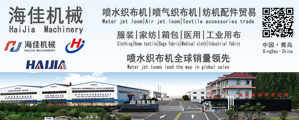The world’s first embroidery art biennial opened
Dec 22, 2018 | by Flora
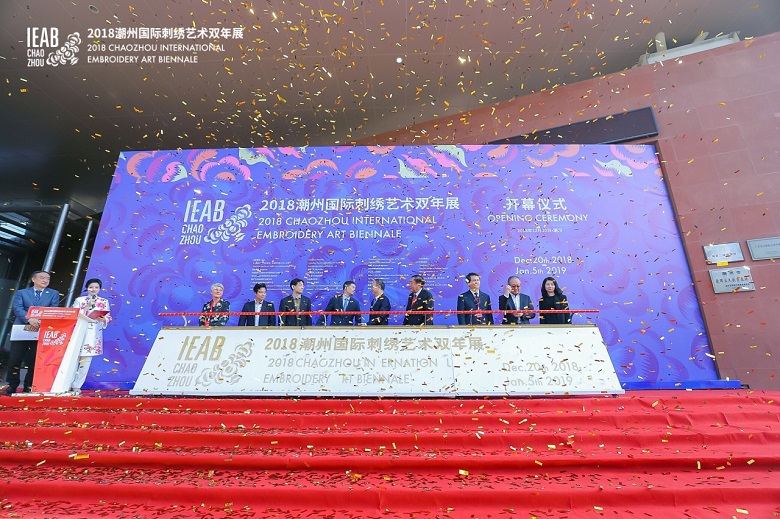
2018 Chaozhou International Embroidery Art Biennale (Biennale for short) was held in Chaozhou on December 20th, 2018. It was the first national embroidery art biennale in China and the first international embroidery art biennale in the world.
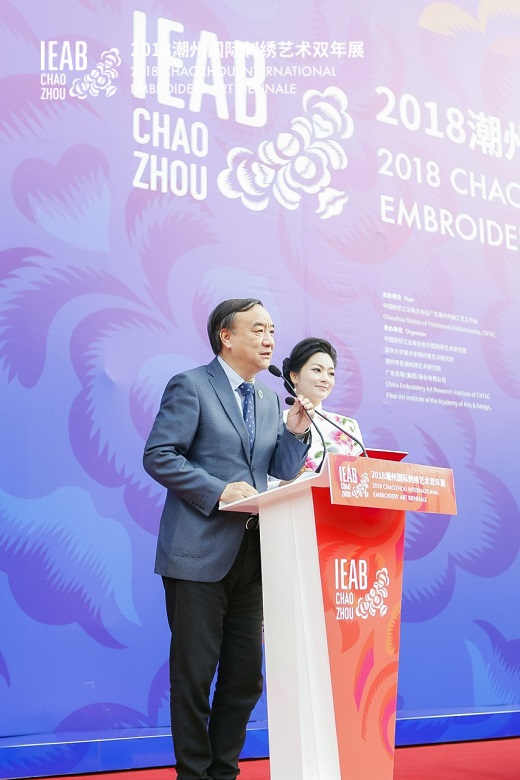
The opening ceremony was presided over by Sun Huaibin (Left), Vice President of China National Textile and Apparel Council (CNTAC)
The Biennale features three topics: “Life & Fashion”, “Inheritance & Rejuvenation”, and “Integration & Transcendence”, exhibiting a total of 249 works from 13 countries and regions, including China, Japan, South Korea, Georgia, Poland, Denmark, Germany, Switzerland, the Netherlands, Norway, Sweden, Canada, and the United States. The works well illustrated the theme of “Embroidery and Contemporary Life”, showing the infinite charm of embroidery art with rich characteristics of the times, and exploring the ways and paths of traditional skills into contemporary life.
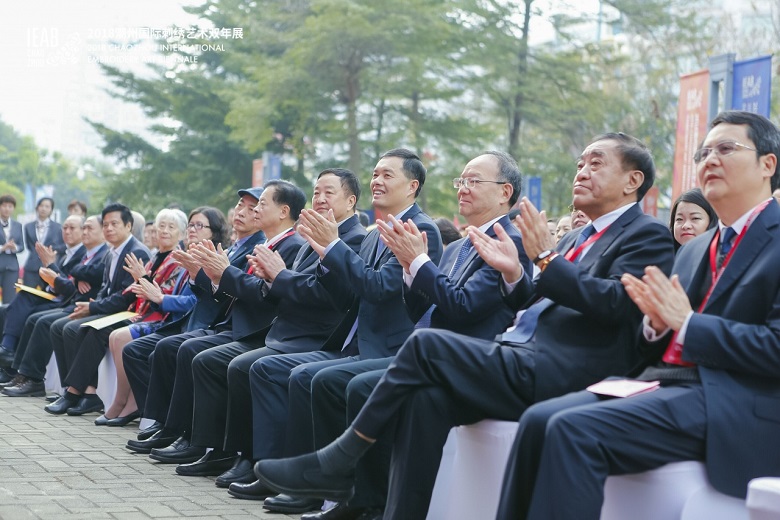
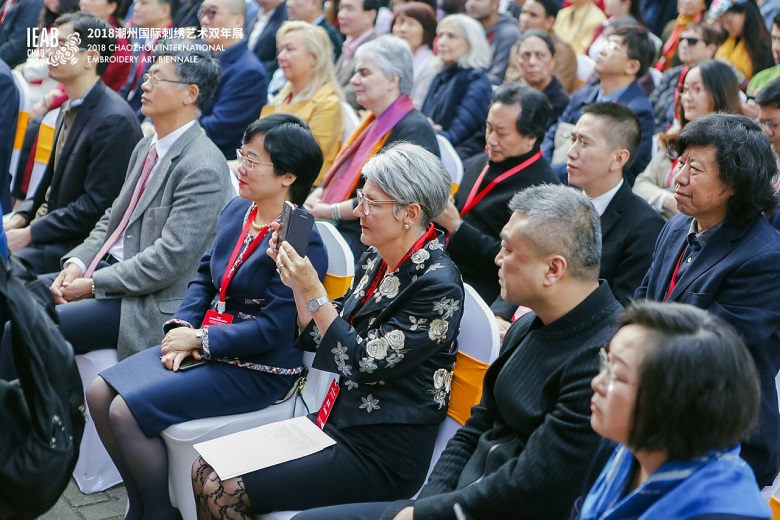
The exhibits are categorized into such three parts as embroidery artwork, embroidery daily necessities, and embroidered cultural products. The Biennale will last until January 5th, 2019.
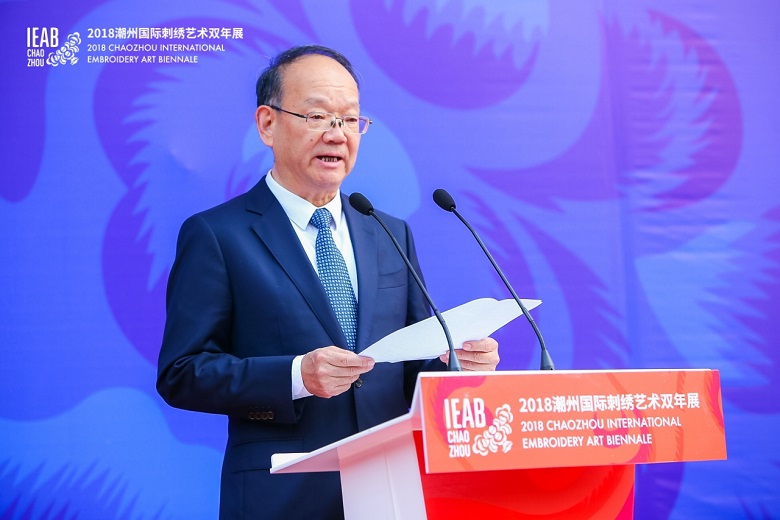
Gao Yong, Party Secretary and Secretary General of CNTAC
For the Biennale, Gao Yong, Party Secretary and Secretary General of CNTAC, delivered a speech at the opening ceremony. He said that this year marks the 40th anniversary of the reform and opening up. The implementation of the “Belt and Road Initiative” cannot only promote cooperation in the fields of economy, trade and commerce, but also bring new opportunities for China and the world in terms of cultural exchanges. Chinese embroidery is making more and more outstanding contributions to the building of the “Belt and Road” cultural prosperity and the promotion of great power diplomacy.
Gao Yong also pointed out that the Biennale aims to effectively promote the entry of intangible cultural heritage into the contemporary mass life and the integration into the international fashion trend. Chaozhou will be built into a platform to promote exchanges and cooperation between the embroidery industry at home and abroad, providing new thinking, new themes and new ideas for embroidery creation, enabling traditional skills to find new development opportunities and environments, making the creation of embroidery works more contemporary and artistic, and promoting the application of embroidery art in household goods, daily necessities and creative cultural products.
It is hoped that this Biennial will be a professional, large-scale and international exhibition, providing a stage for the related people who are dedicated to embroidery research, embroidery creation and embroidery art inheritance at home and abroad.
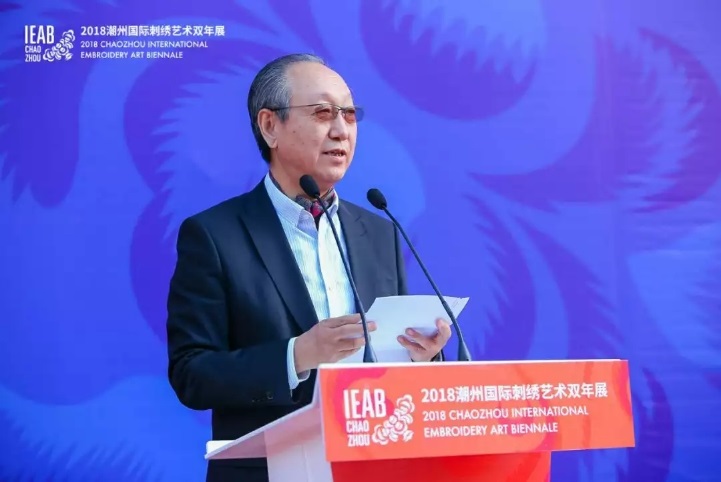
Li Dingqi, chief curator of the Biennale
Li Dingqi, the chief curator, said: “The bottleneck in the development of many intangible cultural heritage industries lies in the lack of design capabilities of practitioners and insufficient innovation capabilities.” He hopes that through this platform, the exchanges between Chinese and foreign artists will inspire the Chinese practitioners to activate their imagination and creativity. “Many of the works exhibited in the Biennial won the final selection are not because of its technique, but the creativity. The artistic value of such works cannot be estimated. Some masters also sent us very wonderful works; however, the base pictures they used are not authorized by the original author. Therefore, the reviewers could not have the works left for exhibition. He said that there are many embroidery authors who cannot make their own works because of their lack of innovative ability, plus the poor awareness of intellectual property right, greatly restricting the further development of embroidery. He hopes that the masters and practitioners will further advance their innovative thinking and intellectual property awareness through the Biennale.
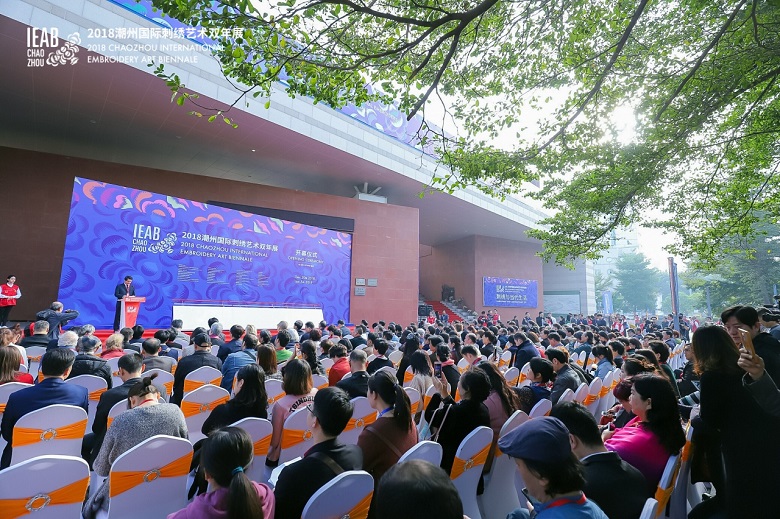
“Life & Fashion”
The works explore the use of embroidery in the design of daily necessities such as garments and creative cultural products from various perspectives. Embroidery increases the cultural connotation of the works and improves the design taste and artistic level.
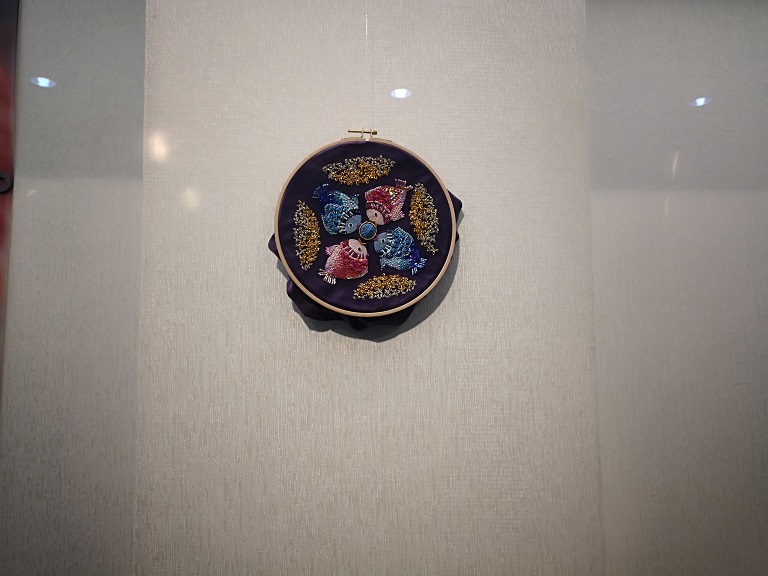
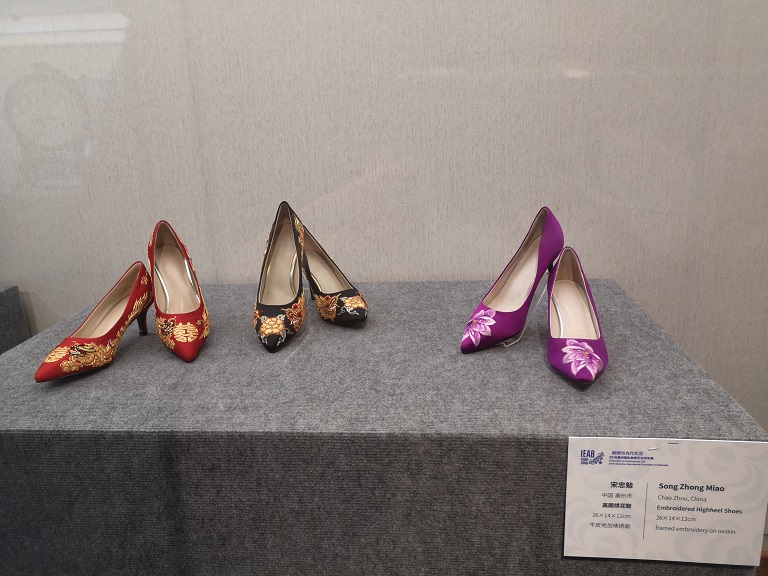
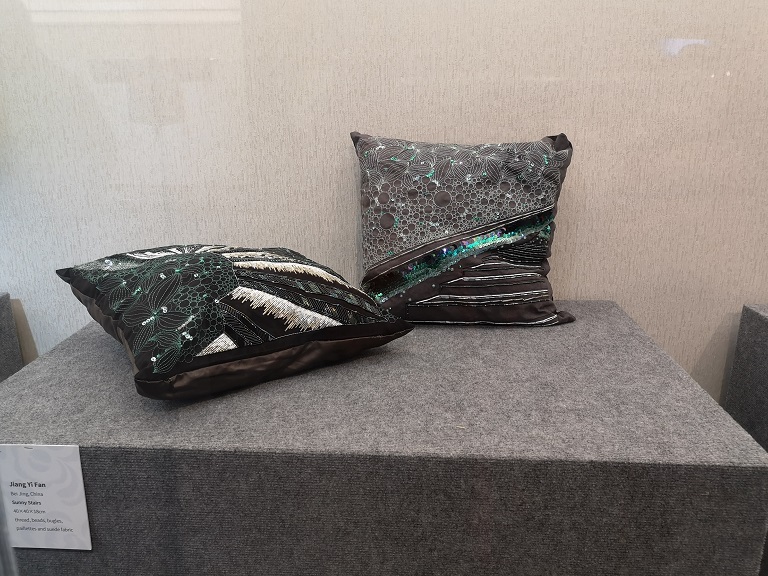
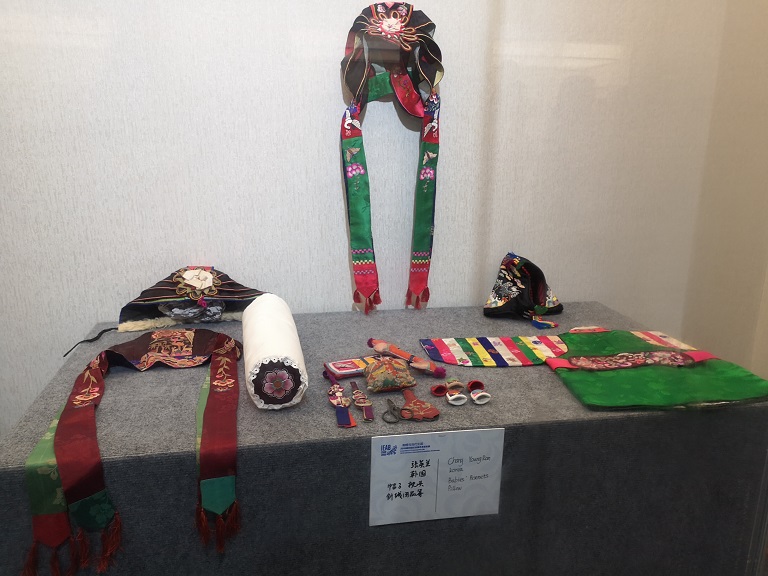
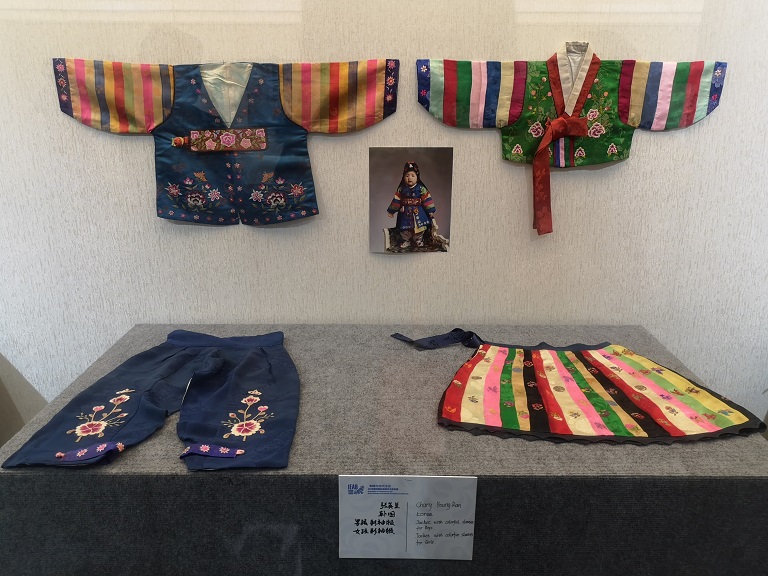
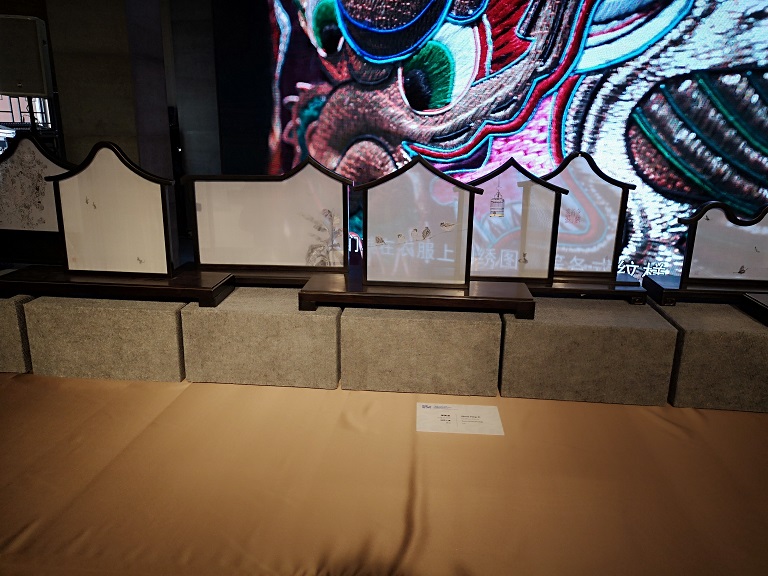
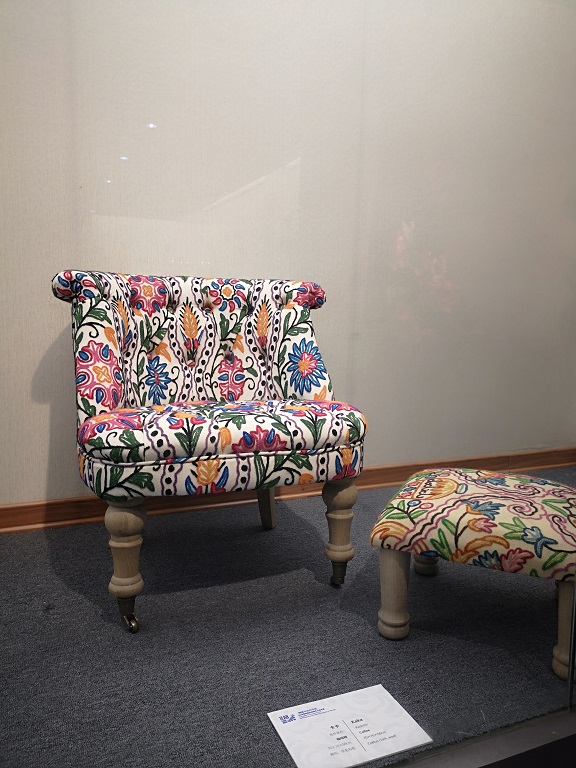
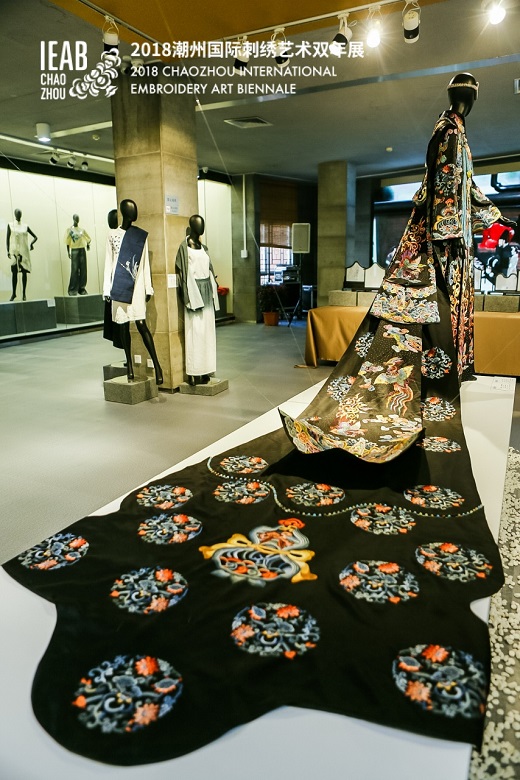
“Inheritance & Rejuvenation”
The works focus on excavating and inheriting traditional techniques, innovating the form and content of embroidery works, and exploring new ways to revitalize traditional industries in the new era.
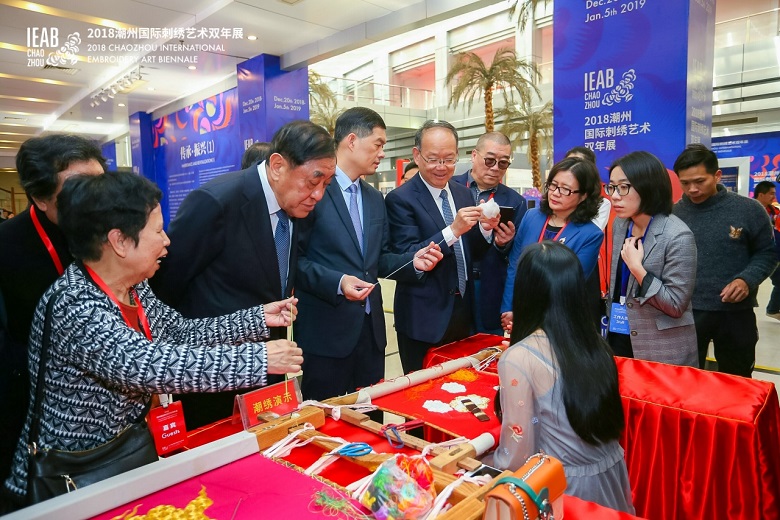
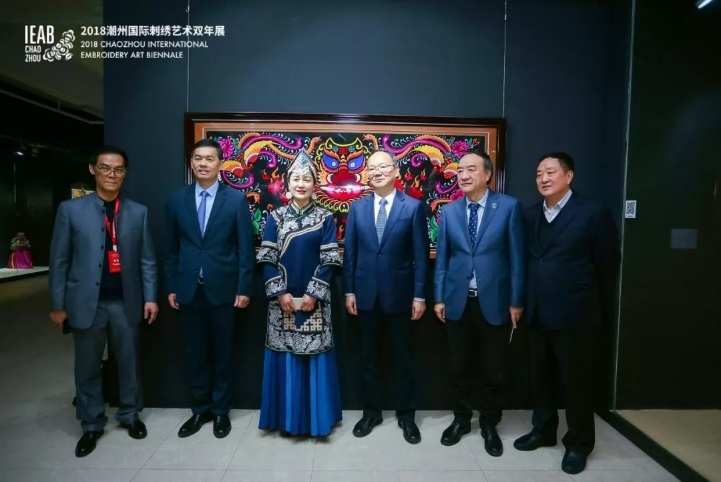
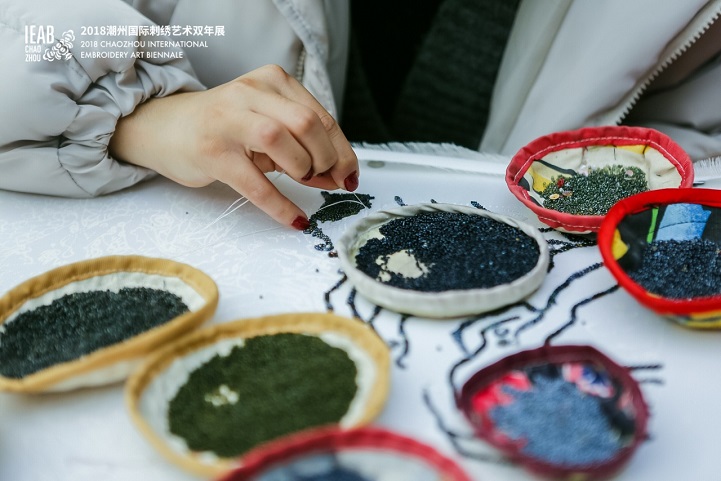
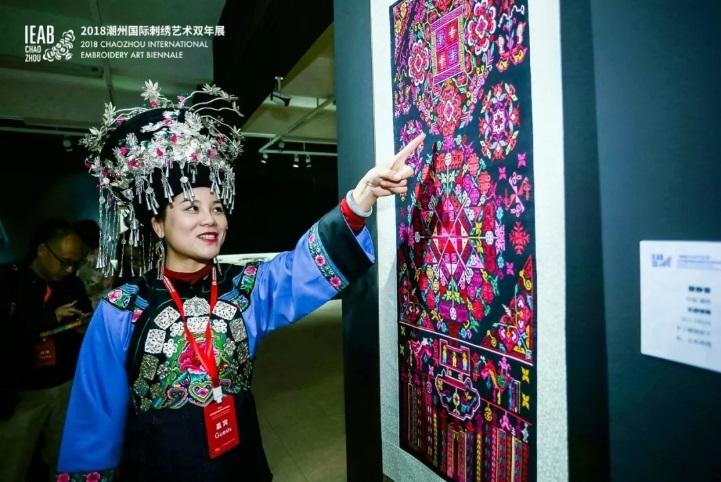
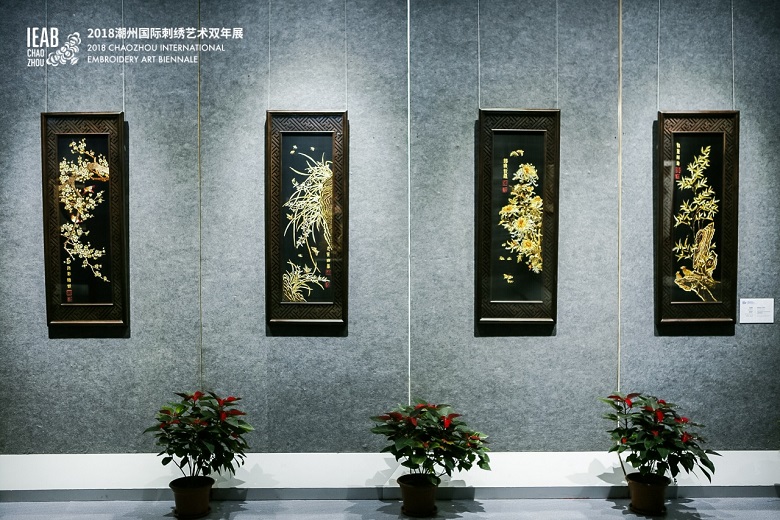
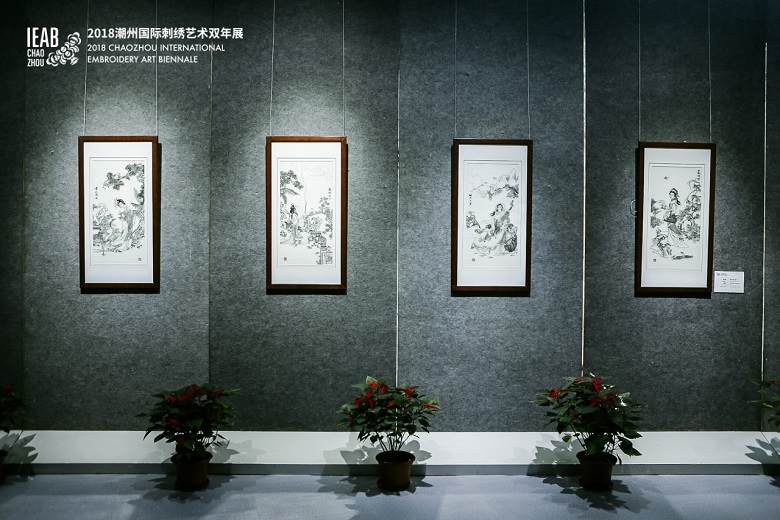
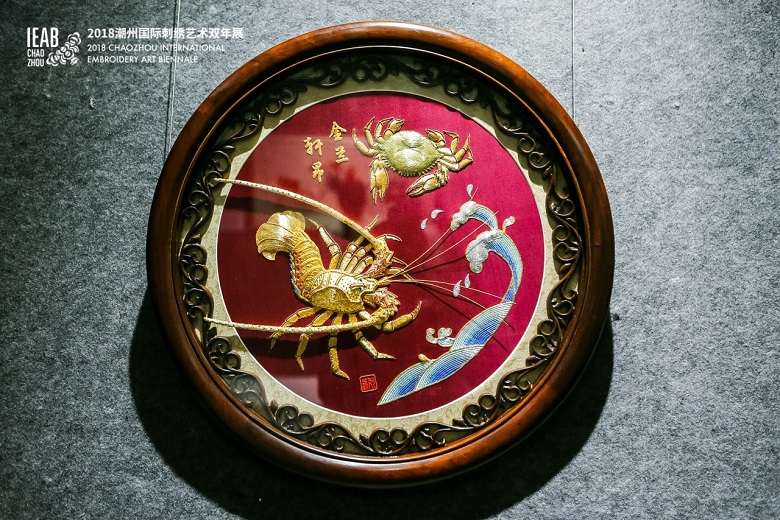
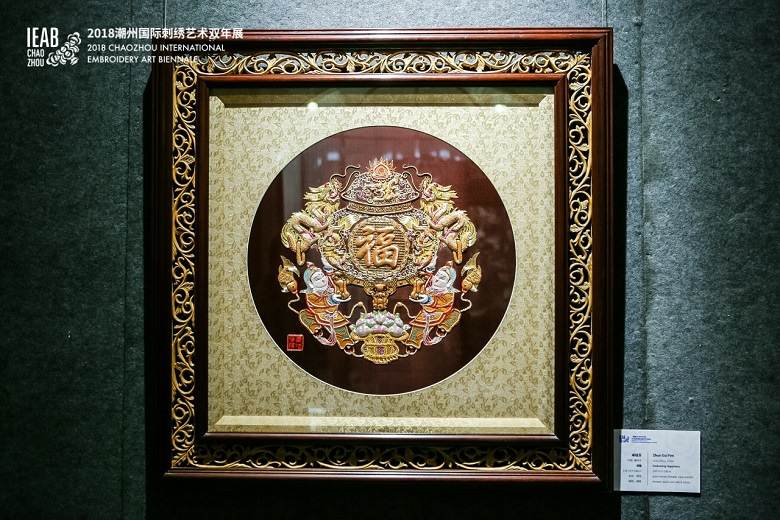
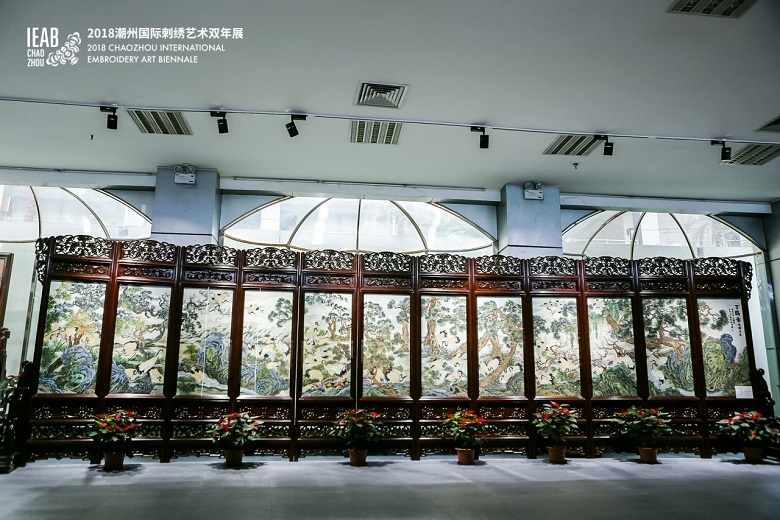
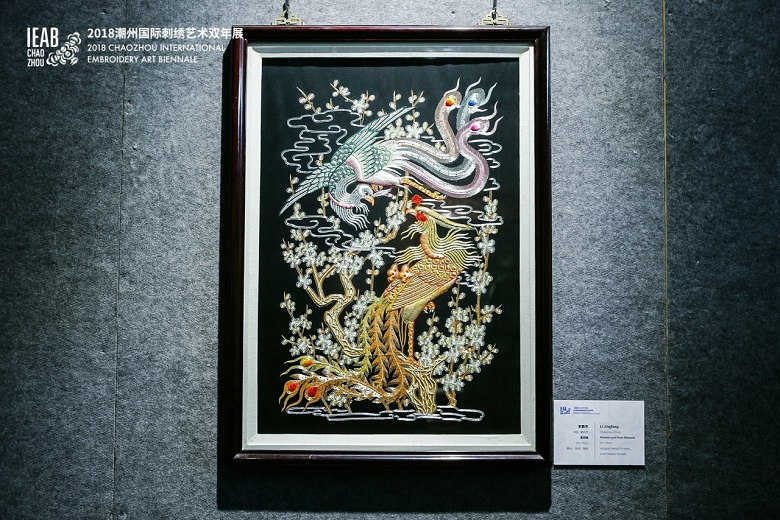
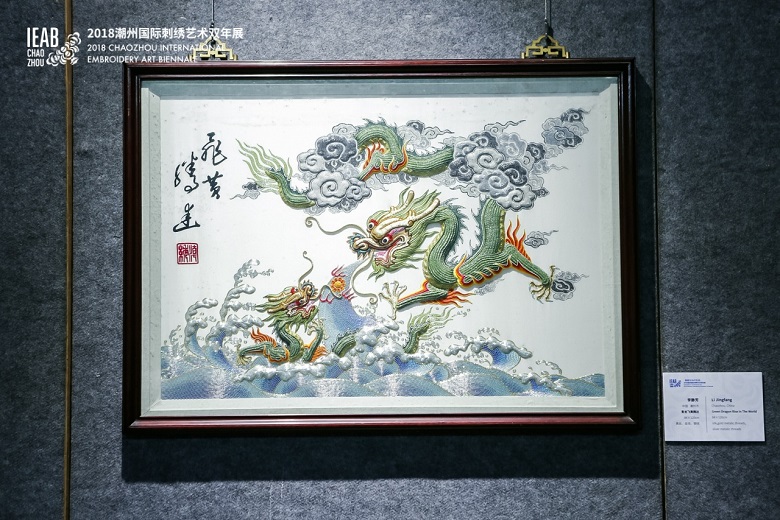
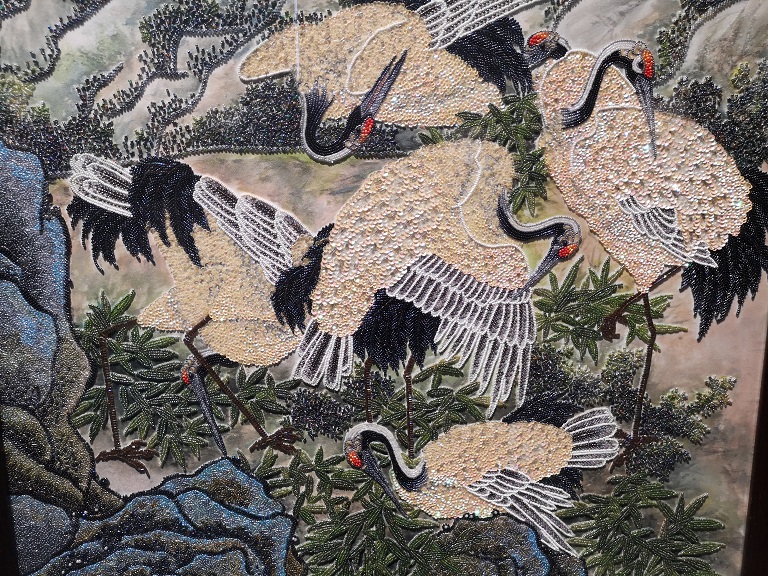
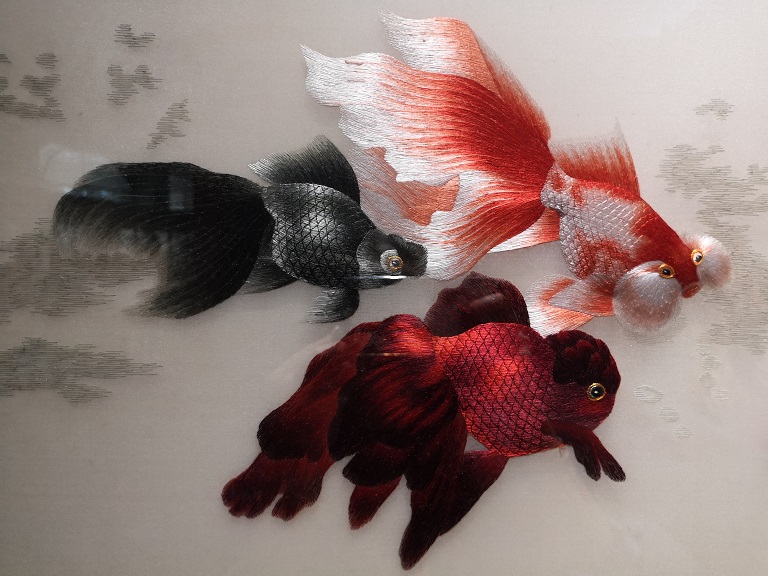
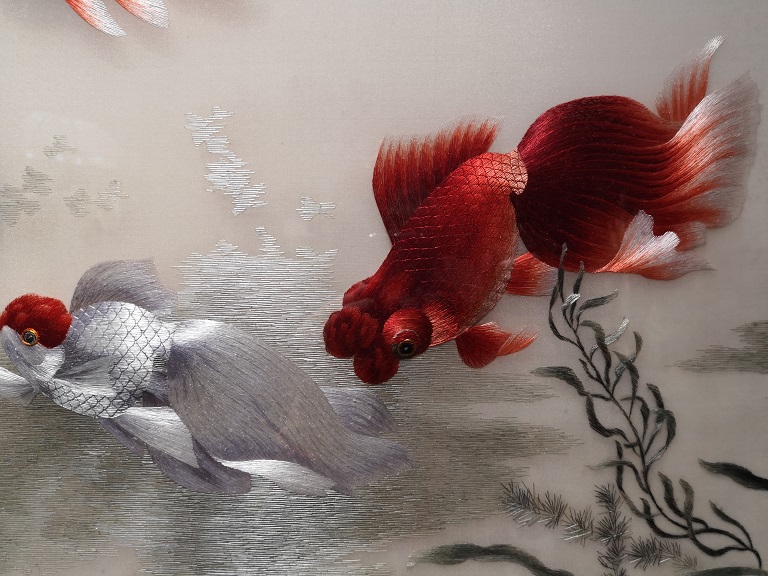
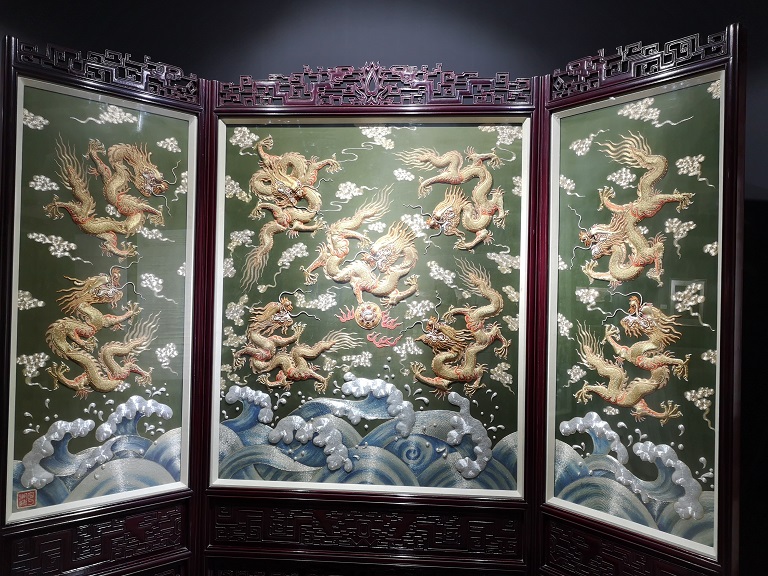
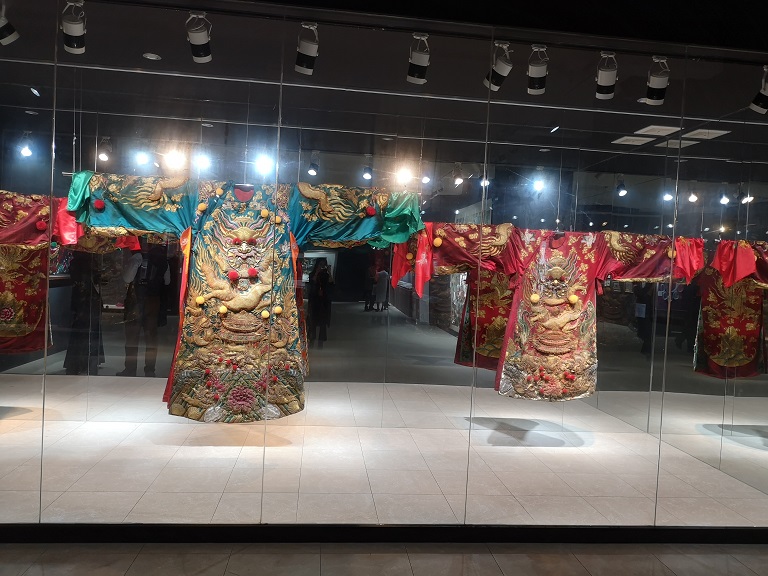
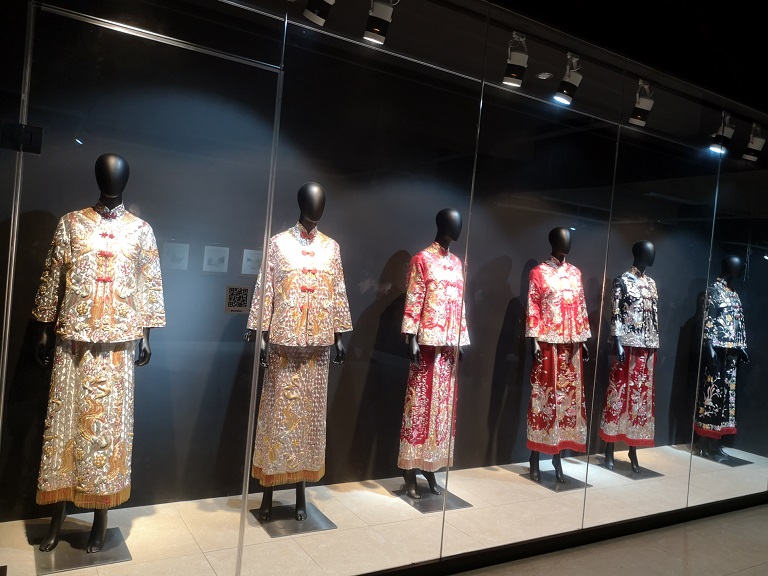
“Integration & Transcendence”
The works seek for possible application of embroidery in a broader field and with a broader vision, such as cross-border, interdisciplinary, and the combination with contemporary art and technology.
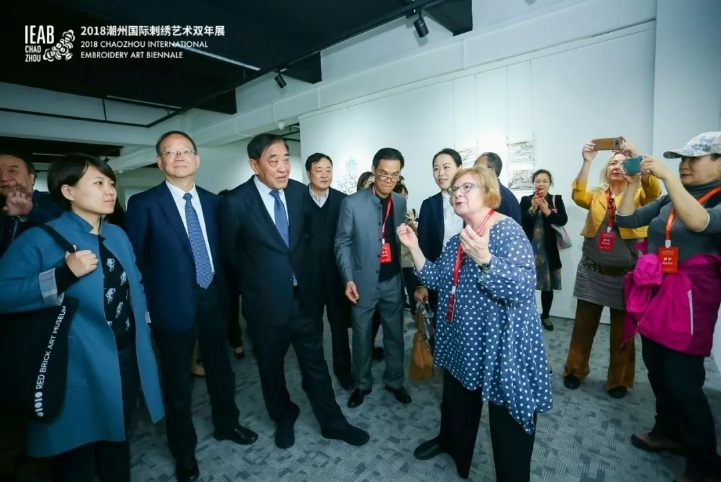
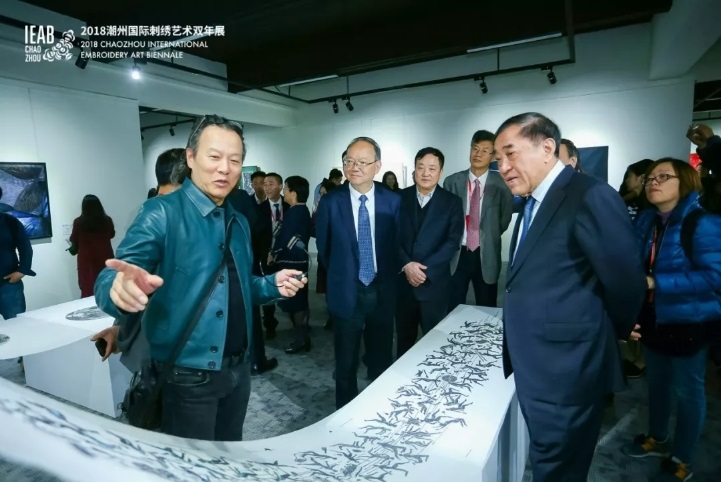
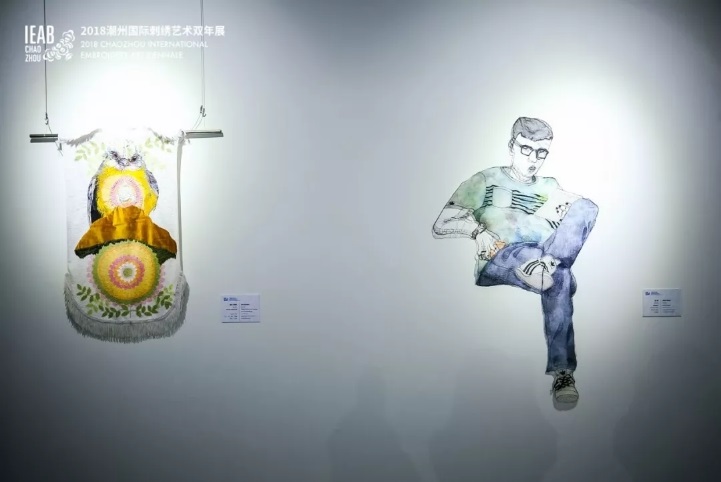
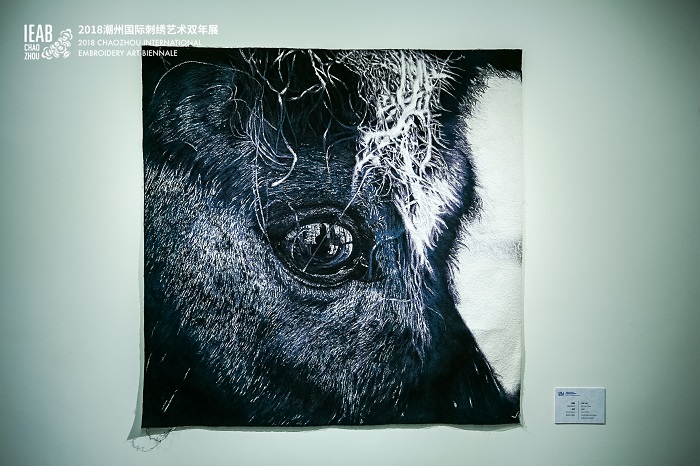
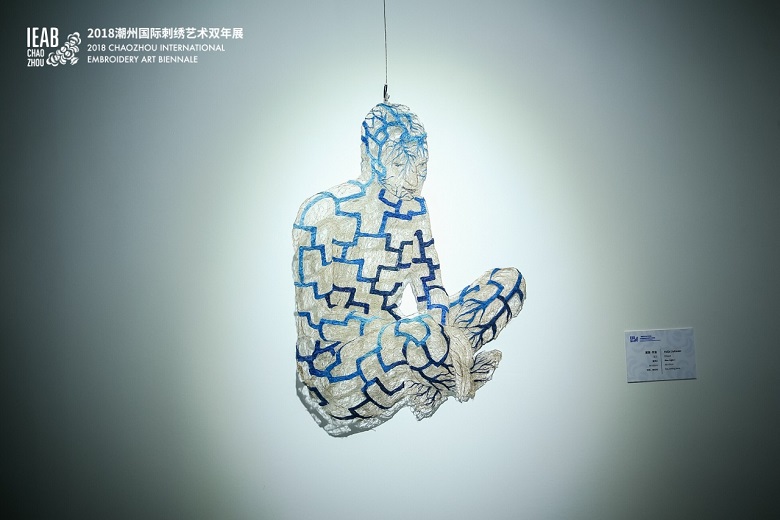


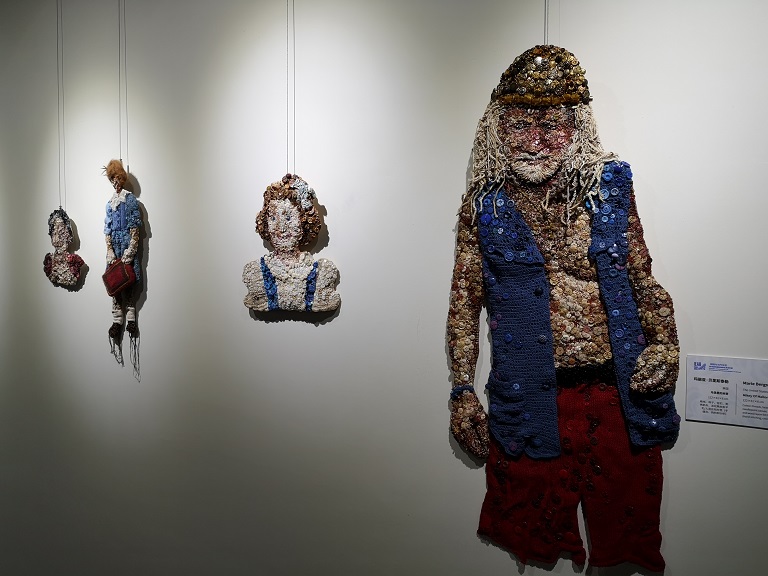
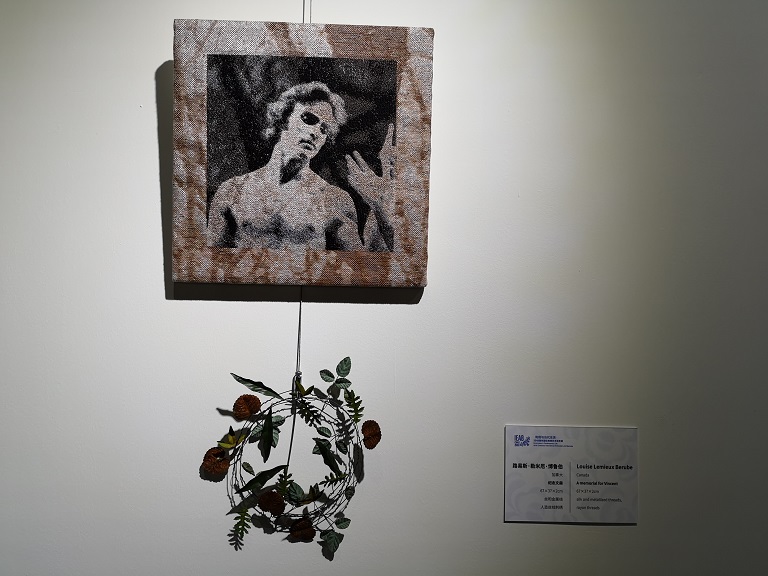
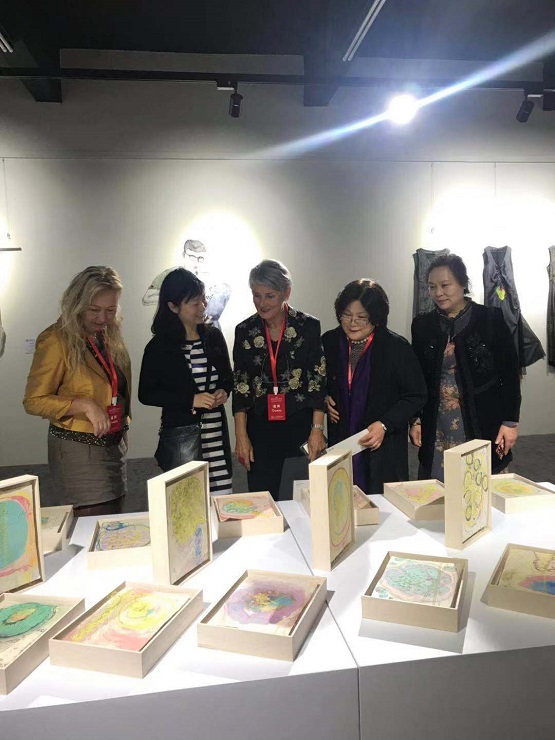
During the Biennale, Chaozhou City will also present a series of related activities, such as Chaozhou Embroidery Apparel Exhibition held in the famous cultural relics of Chaozhou Ancient City.
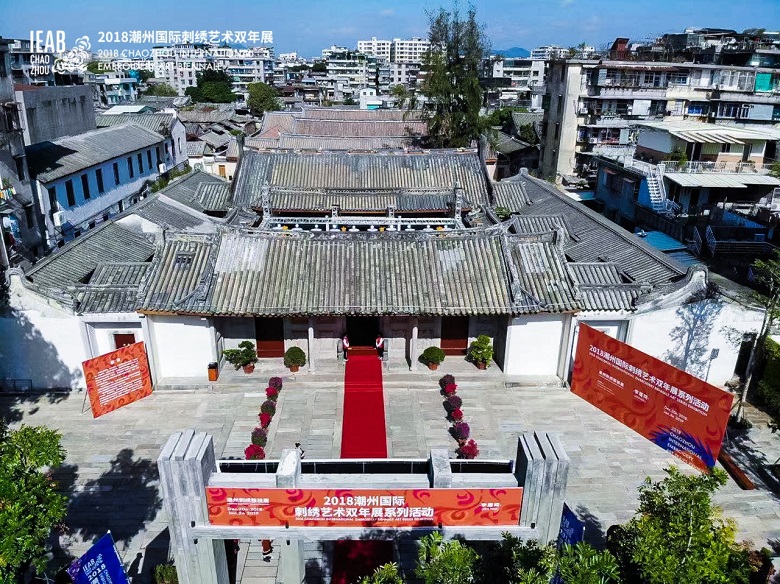
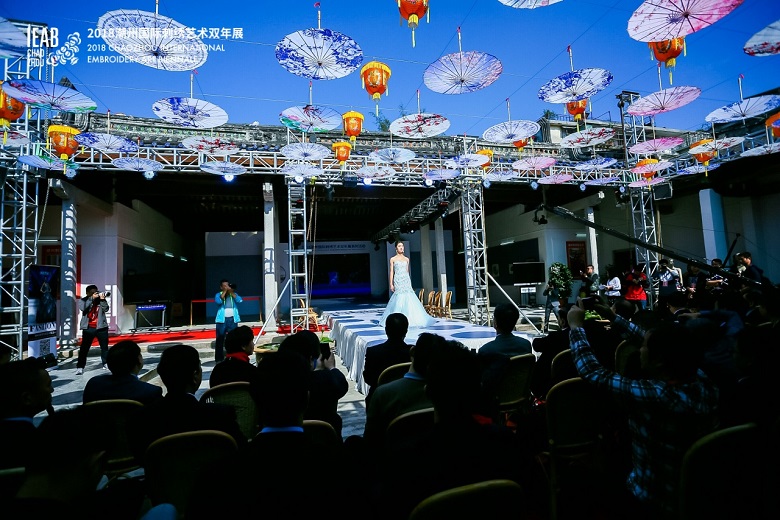
Voice from the Arts and Crafts Masters at home and abroad
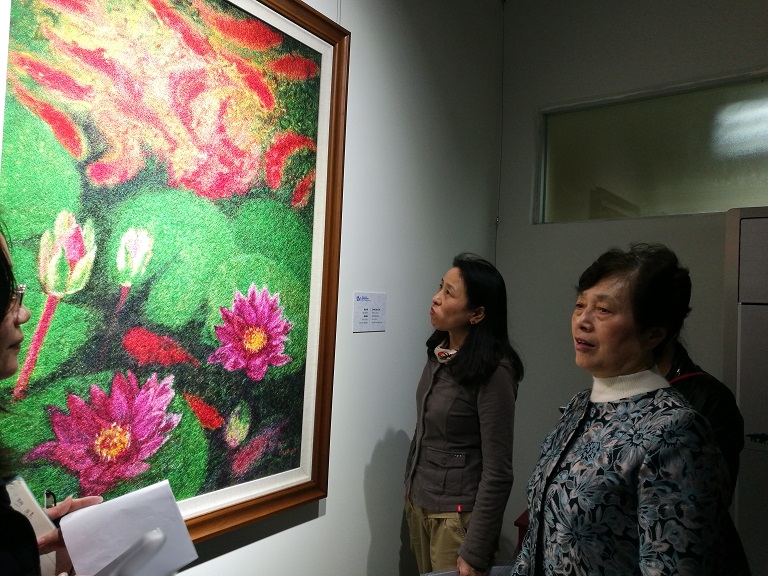
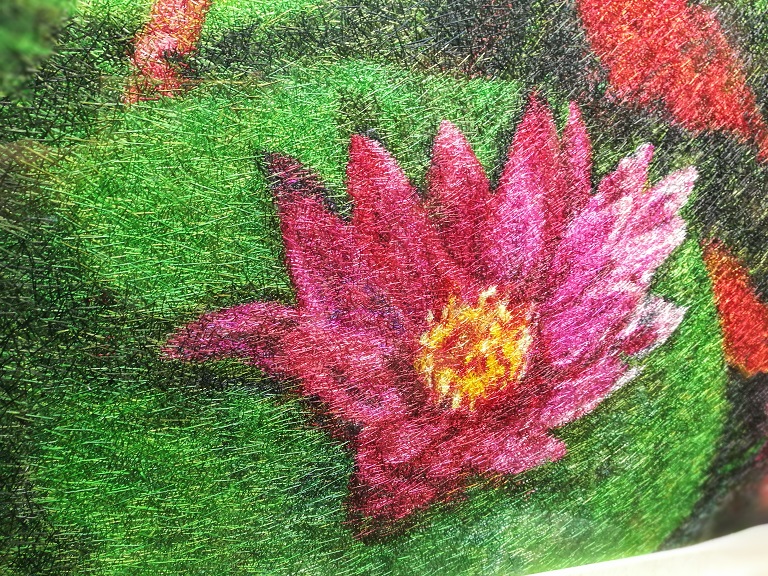
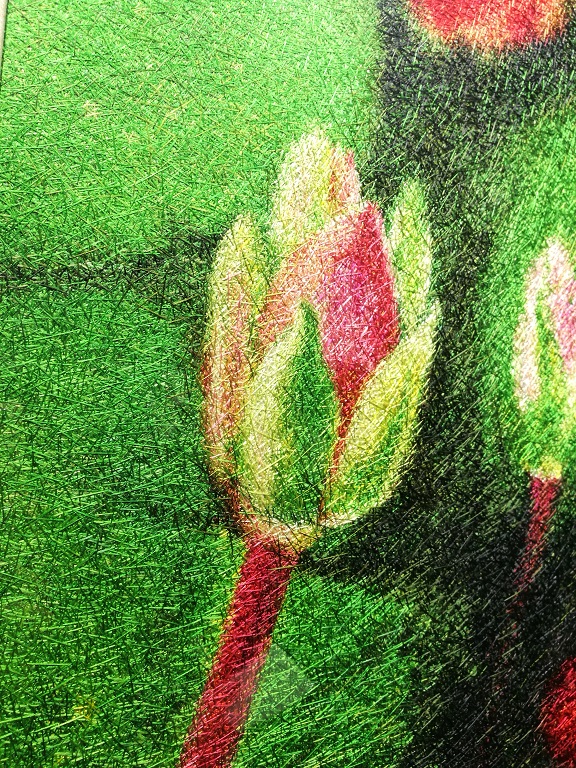
“Carp and Lotus”
Hangzhou Chinese Arts and Crafts Master Chen Shuiqin Studio
Chen Shuiqin: This Biennale is a big reunion and big gathering of embroiderers. We need such a platform to communicate and progress together, making improvement. I can learn something new, especially new ideas, from the Biennale.
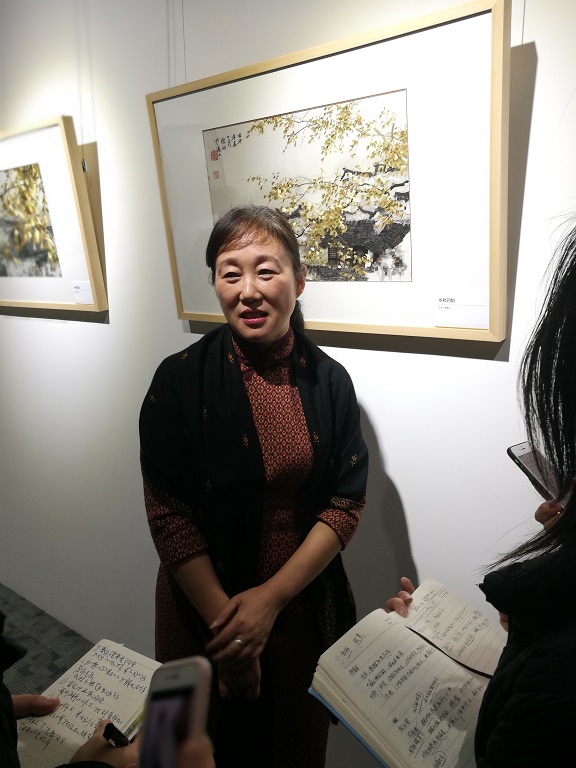
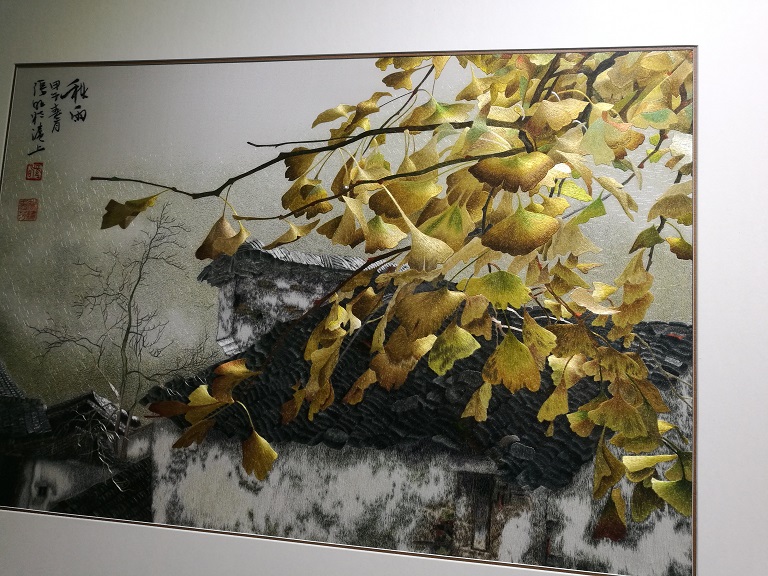
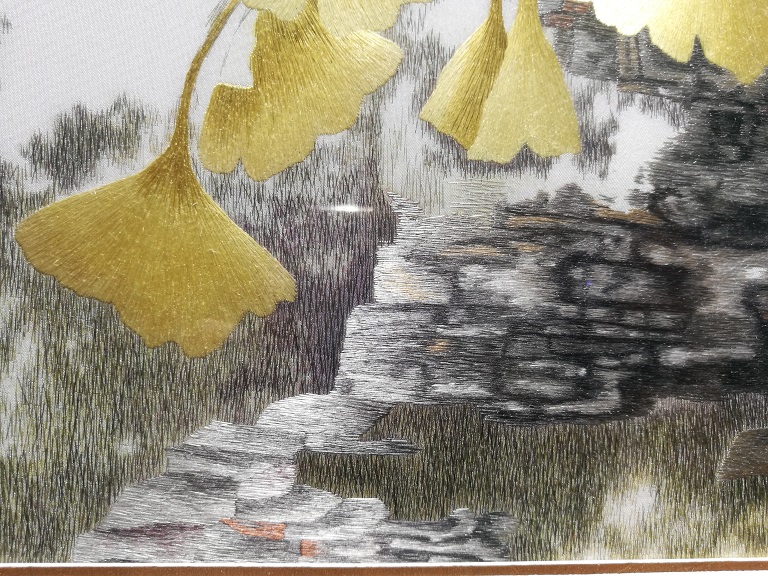
“Nostalgia in Four Settings”
Suzhou Yao Huifen Art Embroidery Research Institute
Yao Huifen: With the support of the state and relevant institutions, in recent years, Suzhou Embroidery has achieved very good development, enjoying an increasingly high international status, which makes young people feel interesting and attracts many newcomers to join as well as the return of the second generation of embroiderers. The participation to the Biennale has really impressed me, for here we can exchange creative ideas, breaking the inherent mode to jointly promote the development of the embroidery industry.
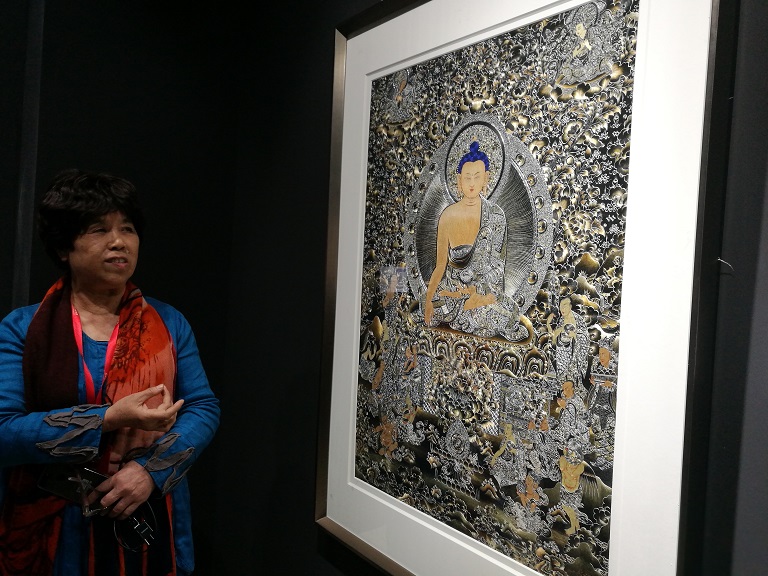
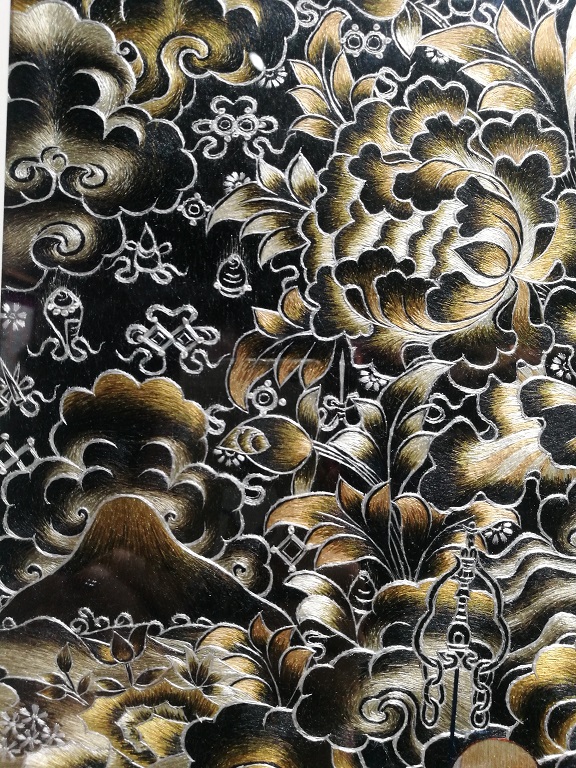
“Black Gold Thangka - Sakyamuni”
Changsha Liu Jianxin Embroidery Art Museum
Liu Jianxin: The characteristics of Xiang Embroidery have always been “lions and tigers”. This time, My daughter and I embroidered this Black Gold Thangka, which cost us one year and a half. The work is featured by more than 20 kinds of stitches. I am very happy to participate in this Biennale and see the works and ideas worthy of reference. We need such a platform to deepen the communication between embroidery people at home and abroad.
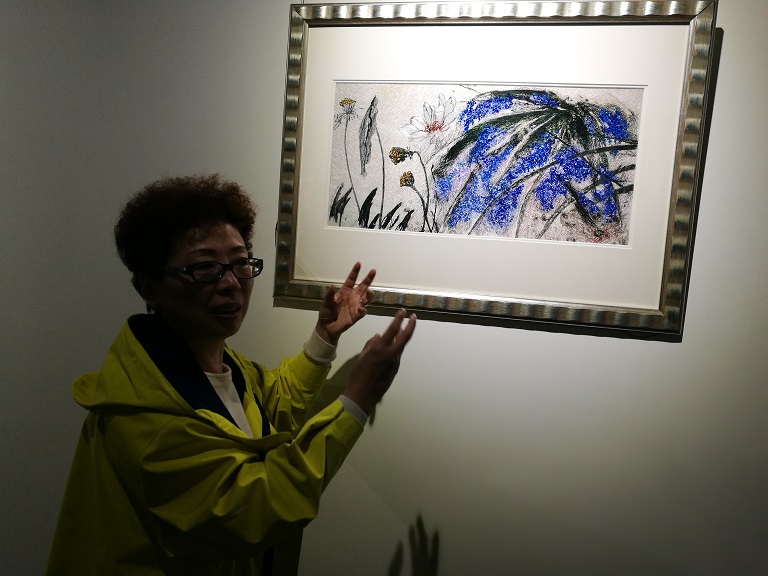
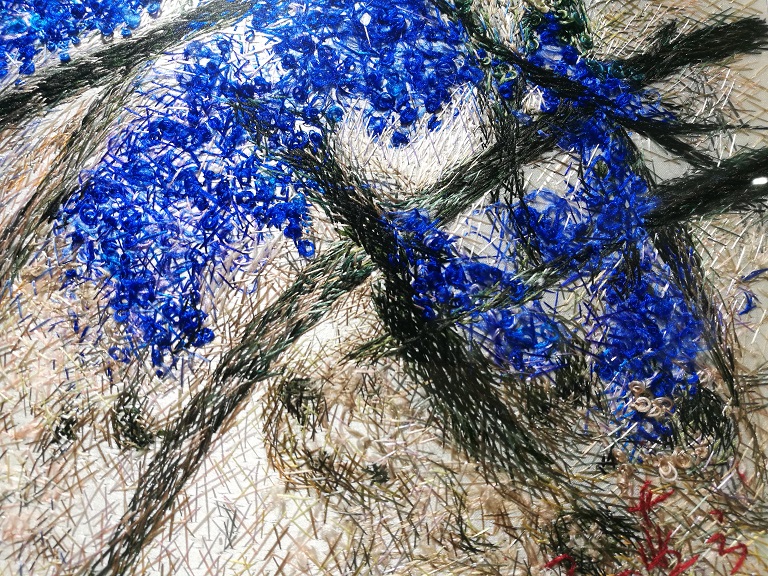
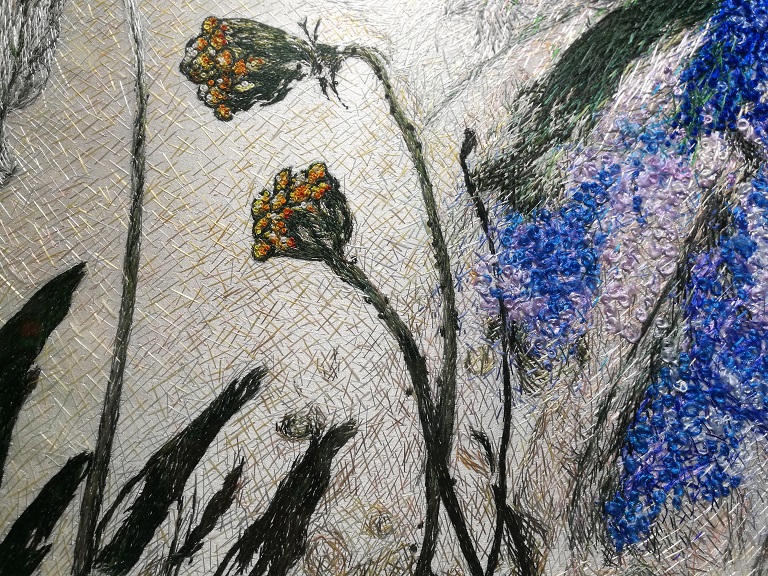
“Lotus”
Sun Yanyun Disordered Needlework Creation Center
Sun Yanyun: In the past, most of the disordered needleworks were used to express the effect of oil painting. However, the work attempts to express the effect of traditional Chinese painting. I am very grateful for the opportunity to attend the Biennale. After seeing the exhibition, I have a lot of feelings. There are more things to learn. How to recreate the works and how to add new ideas and concepts are all aspects that I need to continue learning.
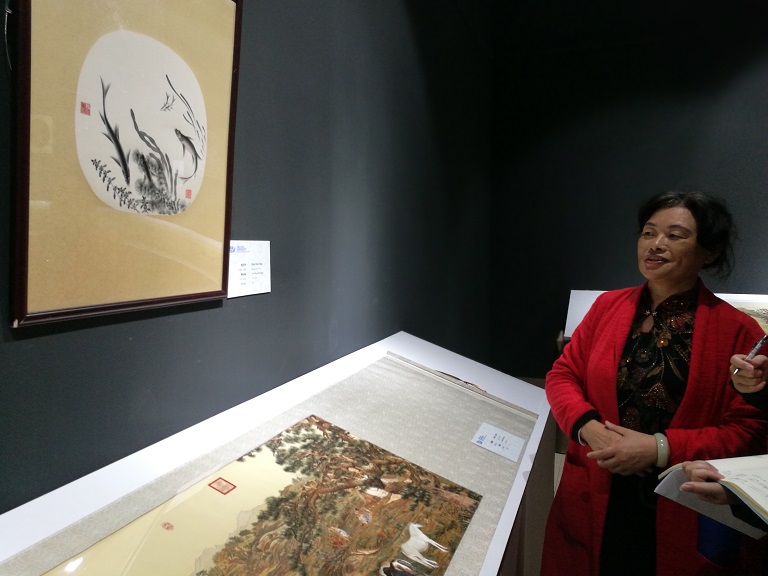
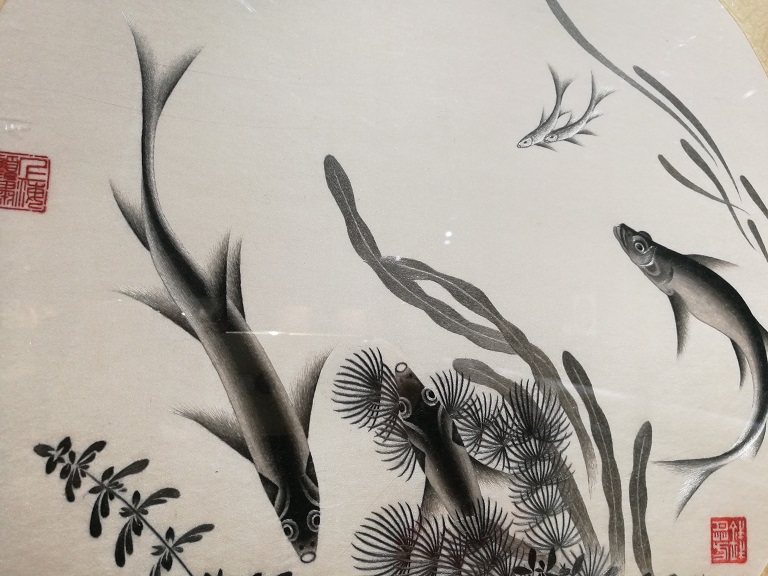
“Fish Play with Algae”
Shanghai Qian Yuefang Gu Embroidery Studio
Qian Yuefang: I have been personally indulged in embroidery for 40 years. I am very happy to come to the Biennale to learn and communicate with domestic and foreign embroidery people. During the exhibition, I am inspired by the fact that traditional stitches and skills must be well inherited. And to truly inherit the great art of embroidery, continuous innovation is a must.
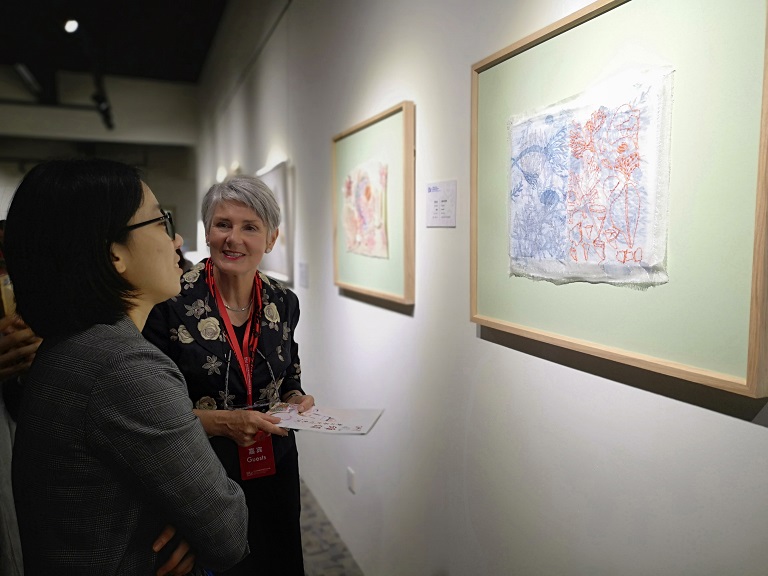
Valerie Kirk, Director of Textile Design Dept., Australian National University: I would like to express our appreciation of all the work that has gone in to arranging the International Embroidery Art Biennial Exhibition. Being here, seeing the work and meeting other artists is inspiring and gives me a greater understanding of embroidery throughout our contemporary world. We can focus on how this area of contemporary practice is developing and garner ideas for the future.
Embroidery speaks of our presence, the here and now and the tangible world we inhabit in the face of increasing hi tech and virtual reality. When I stitch my fingers are nimble through years of practice. They are invisibly connected to my inner world and the emerging embroidery draws on my artistic ideas, sensibilities and themes. I create new works that build on our history and traditions to explore ideas about the past present and future.
I hope you all enjoy the embroidery as much as I have and that you can share in conversations to build the future for this compelling art form.
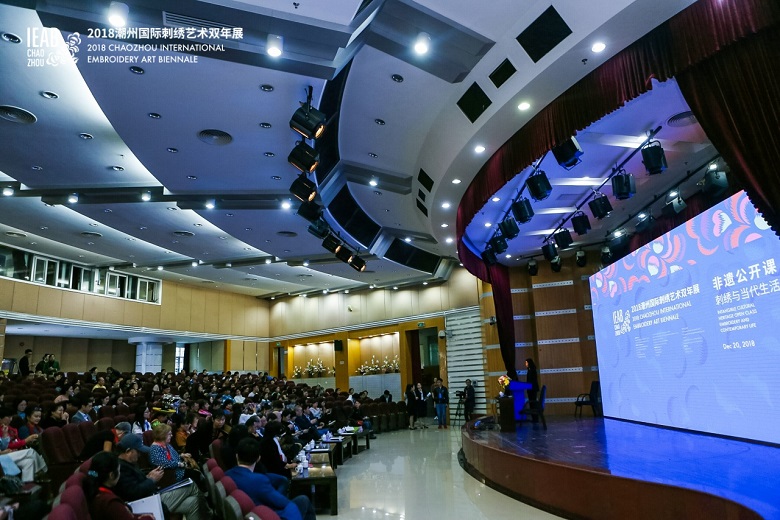
In the afternoon of the opening day, the Intangible Cultural Heritage Open Class of the Biennale was held at the International Conference Center of Hanshan Normal University in Chaozhou, Guangdong. The Open Class invited domestic and foreign embroidery artists from the embroidery industry as well as industry stakeholders to discuss the theme of this Biennale “Embroidery and Contemporary Life”.
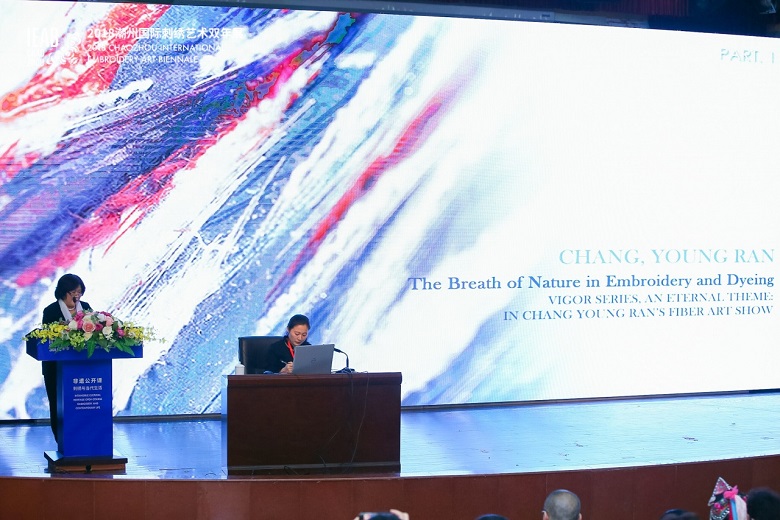
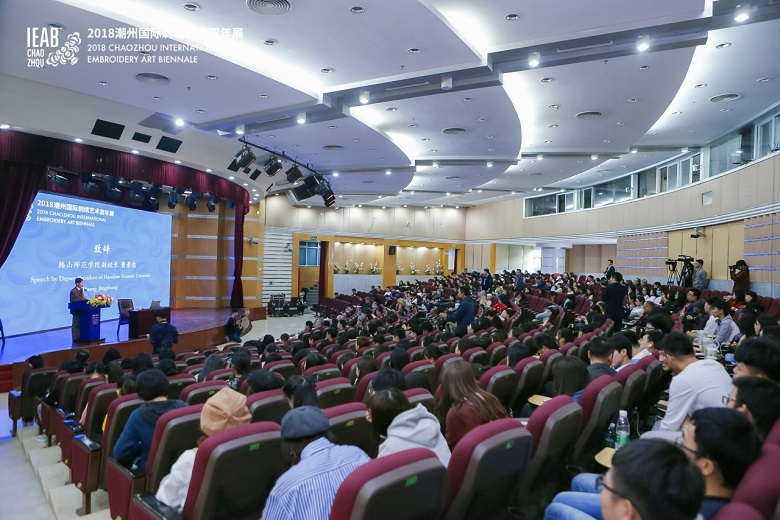
The Biennale is approved by the Ministry of Culture and Tourism of China, sponsored by China National Textile and Apparel Council (CNTAC), Guangdong Provincial Department of Culture and Tourism, Chaozhou Municipal Committee of the Communist Party of China, Chaozhou Municipal People’s Government, and jointly organized by Chaozhou Traditional Craft Workstation of CNTAC, China Embroidery Art Research Institute of CNTAC, Fiber Art Institute of the Academy of Arts & Design, Tsinghua University, Chaozhou Famory Embroidery Academy, and Guangdong Famory (Group) Co., Ltd.





